Return to the Tokaido
From Hamamatsu to the Tenryu River along the Tokaido Old Road
Back in Bentenjima, an island in the outlet where Lake Hamana sweeps out into the Pacific Ocean. It’s a muggy, late-rainy-season day - cloudy and oppressive. Bentenjima is a world of bait shops and pre and post bubble era hotels. A crowd of tourists gather around the torii gate out across the water that will be flooded when the tide comes in.
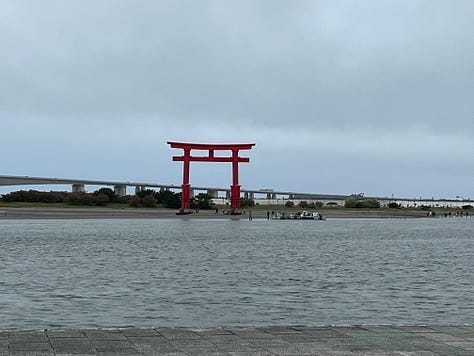

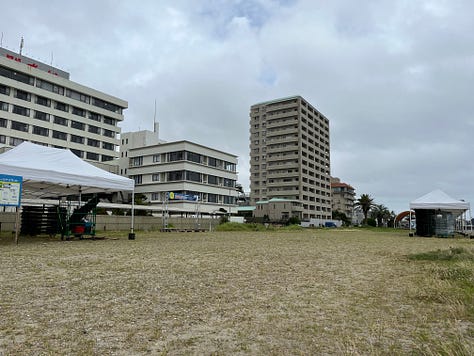
Rather like Victorian England and Europe with its health spas and “taking the waters”, Meiji era Japan decided that sea bathing was especially important for recovery from illness. Wealthy Hamamatsu-ites built villas by the sea at places like Bentenjima so they and their children could swim in the sea during the school holidays. All these villas are gone now, replaced by the concrete egg boxes of hotels.
Hiroshige’s print of this area shows a rather exaggeratedly-steep set of mountains in the background, and in the foreground, the marker posts that guide the boats on the crossing of Lake Hamana. The Tokaido route is marked by pines leading away from the semi-submerged posts. In the distance, Mount Fuji can be spotted - in the height of Japanese summer though, I wouldn’t be able to see Mount Fuji even when I was considerably closer. The fishermen in the picture are probably gathering clams, which are a local speciality.
The Tokaido leads away from all this, back into suburbs. I stop in a park just before the Tokaido once again becomes pine-tree-lined. An old lady rides up on a bicycle, face wrinkled like a dried persimmon.
“Atsui-ne!” It’s hot isn’t it!?
“Atsui desu-ne!” It is hot isn’t it!
Then she says something else that is lost between my Japanese ability, the noise of early cicadas and her toothlessness.
I nod.
She lights up a cigarette and chatters happily to herself.
Then I’m off, I swing the rucksack with concertina sleeping mat onto my back, and nod to the old lady.
Somewhere farther along this long straight road a lady in her sixties stops her car alongside me and says something I can’t quite hear.
“Doushita-no?” What’s wrong? I’m back to kindergarten speak again.
“Where are you from?”
Oh, FFS! I don’t have the energy to answer these kind of questions after sixteen years in Japan. I know where the conversation’s going to go - absolutely nowhere. Possibly, bearing in mind she looks like she’s in her sixties, to a comment about David Beckham. Not old enough to say that England is an industrial country.
“Daijoubu desu!” I’m OK. I wave for her to drive on. This is after all, a busy main road, she’s going to block traffic soon. I doubt the traffic behind will consider her conversational requirements any more important than I do.
She drives on. I feel guilty. She only wanted to talk! But really, TPO - Time, Place, Occasion. She stops at a set of traffic lights just a few metres farther along the road. Please change before I get there! They don’t, but she doesn’t try to talk to me again.
Suburbia ends, the Tokaido merges and becomes a larger road, lined with restaurants and car parks and happy diners eating in windows. Over these, the big red, white and blue logo of Suzuki. This is their headquarters. The English sign seems to indicate I need to make a reservation to visit, but the Japanese doesn’t.
I enter anyway. Do I need to make a reservation? No, apparently not. It’s a hangover from the Covid era. I have to write down my e-mail address in case they need to contact me. As no contact tracing is being done, and very few people get tested these days, this seems a little futile. It’s a little odd, for the most part, except the masking, Japan seems to have decided that Covid is over now, like Christmas is over here the instant December 25th arrives. But, in some places Covid seems to live on, a reluctance to let go of old rules.
Anyway, the Suzuki museum is pretty interesting. It covers the process of designing and making a car, the local history of the area, and Suzuki’s current business locations. Torakusu Yamaha repaired an American musical organ at a school, and meticulously reverse-engineered it to start making his own musical organs, thereby starting the Yamaha musical instrument business. Sakichi Toyoda (founder of the Toyota company) would improve the weaving loom, helping the Hamamatsu area become renowned for its manufacture of weaving looms as well as musical instruments. Finally, Michio Suzuki would invent a weaving loom on which vertical and horizontal stripe patterns like tartan could be woven. Not satisfied with this, Suzuki would move on to create the Suzulight, a lightweight car.
This manufacturing prowess was reinforced by adopting the German Meister system of education. The Hamamatsu Technical High School (later a faculty of engineering for Shizuoka University) educated a number of Suzuki chairmen and presidents, as well as those from Honda.
Suzuki today is a fairly successful car-manufacturing firm. Its sales and production are rising, its profit per vehicle is middle of the table. The problem, I suppose is that Suzuki makes low-to-mid-range vehicles. They’re nowhere near luxury, indeed, the Suzuki Celerio, a city car, had the lowest average price per unit in Europe in 2016 (I can’t find more recent figures). This type of car is competing against those produced by factories in middle-income countries and regions like Indonesia and Eastern Europe. Hence the need to bring in Brazilian and other workers to keep it competitive.
After the Suzuki Museum, I head into the centre of Hamamatsu along a road lined with a thicket of signs so confusing I have to stop and take a photo. There are signs at every level, of every shape and of every colour. How does a driver find what they’re looking for? All this with the tangled skein of wires and telegraph poles that line most Japanese streets. Japanese urban architecture can be incredibly ugly.
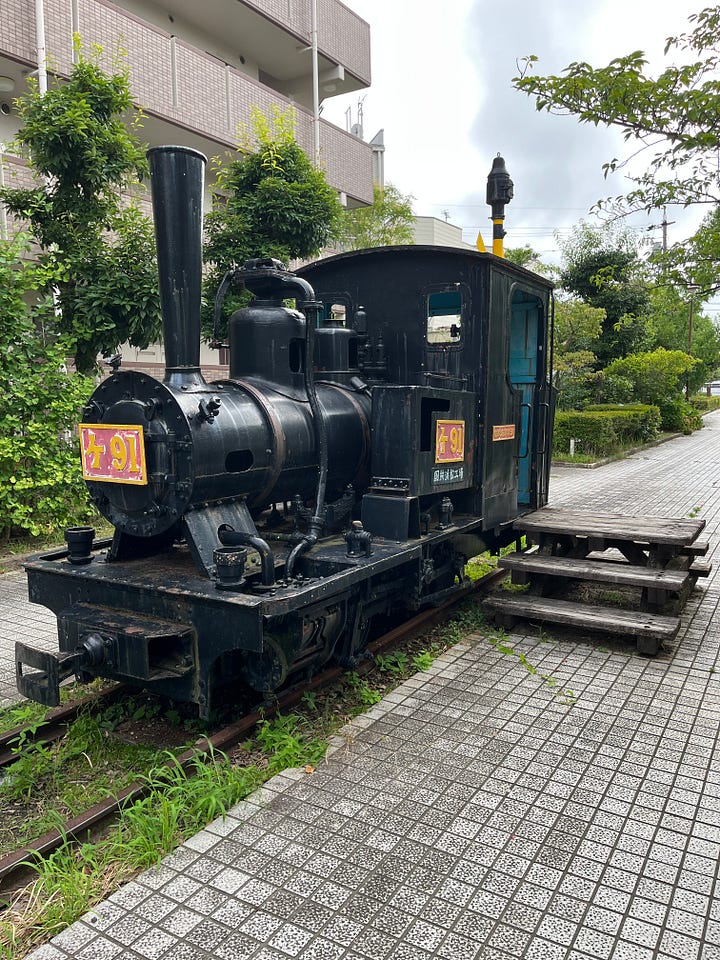
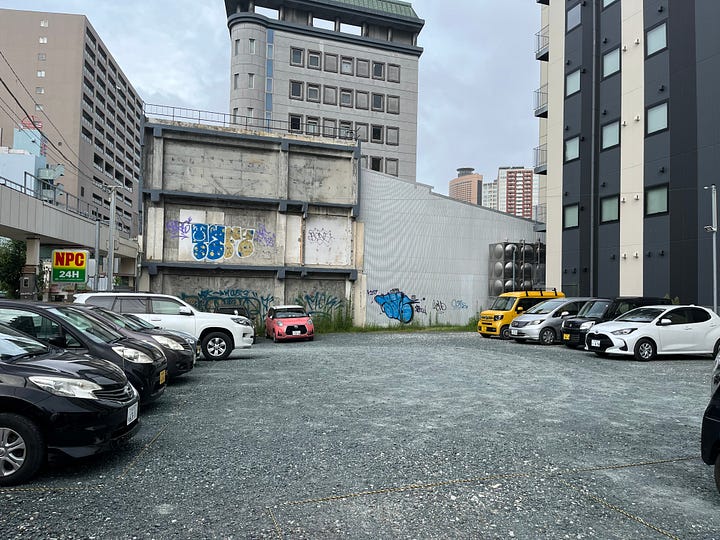
I rest in a park that had once been a railway line near the centre of Hamamatsu. I sit near to an old steam train until mosquitoes drive me away. The centre of Hamamatsu itself seems pretty run-down. Gaps between buildings are filled with temporary gravel car parks, their parking places marked out with coloured ropes. It reminds me of Manchester in the UK prior to redevelopment - the NCP car parks on old World War Two bomb sites near the city centre. There’s grafitti too - which is unusual for a Japanese city.


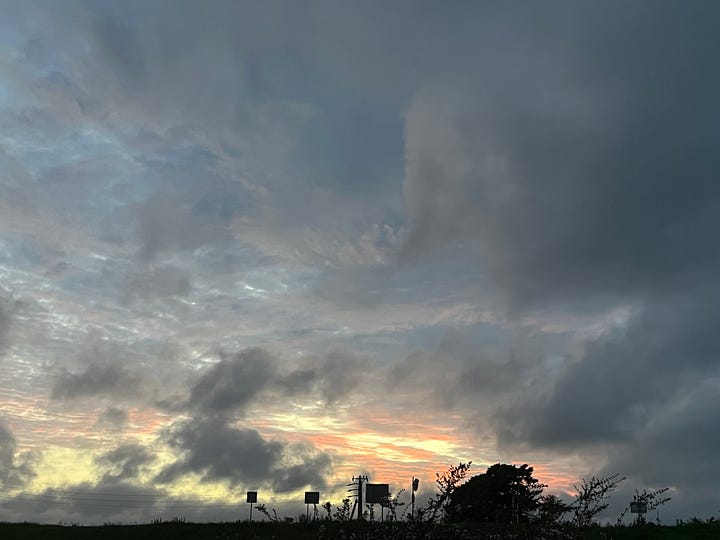
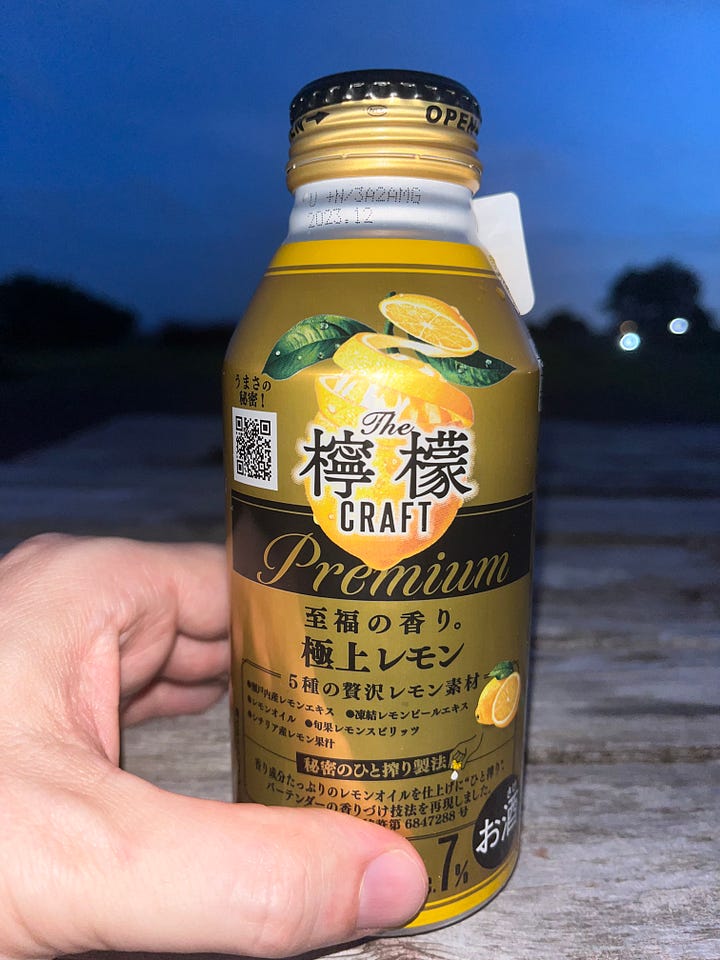
On and on the Tokaido goes, the sun dropping further and further until I can see the banks of the Tenryu (Heavenly Dragon) river approaching. A typical riverside park provides a good sleeping spot. There don’t seem to be any mosquitoes, the bats fluttering overhead may help with that. I sit on a bench, eat my conbini dinner and wait for darkness. To ease my nerves, I’ve bought a can of lemon sour. I’ve never tried this before, and I was unprepared for just how sour it was. Like Proust’s madelaine, the taste unleashes memories of sucking a lemon candy in the school library, and getting caught by the formidable librarian - Mrs. Graham and thrown out of the library.





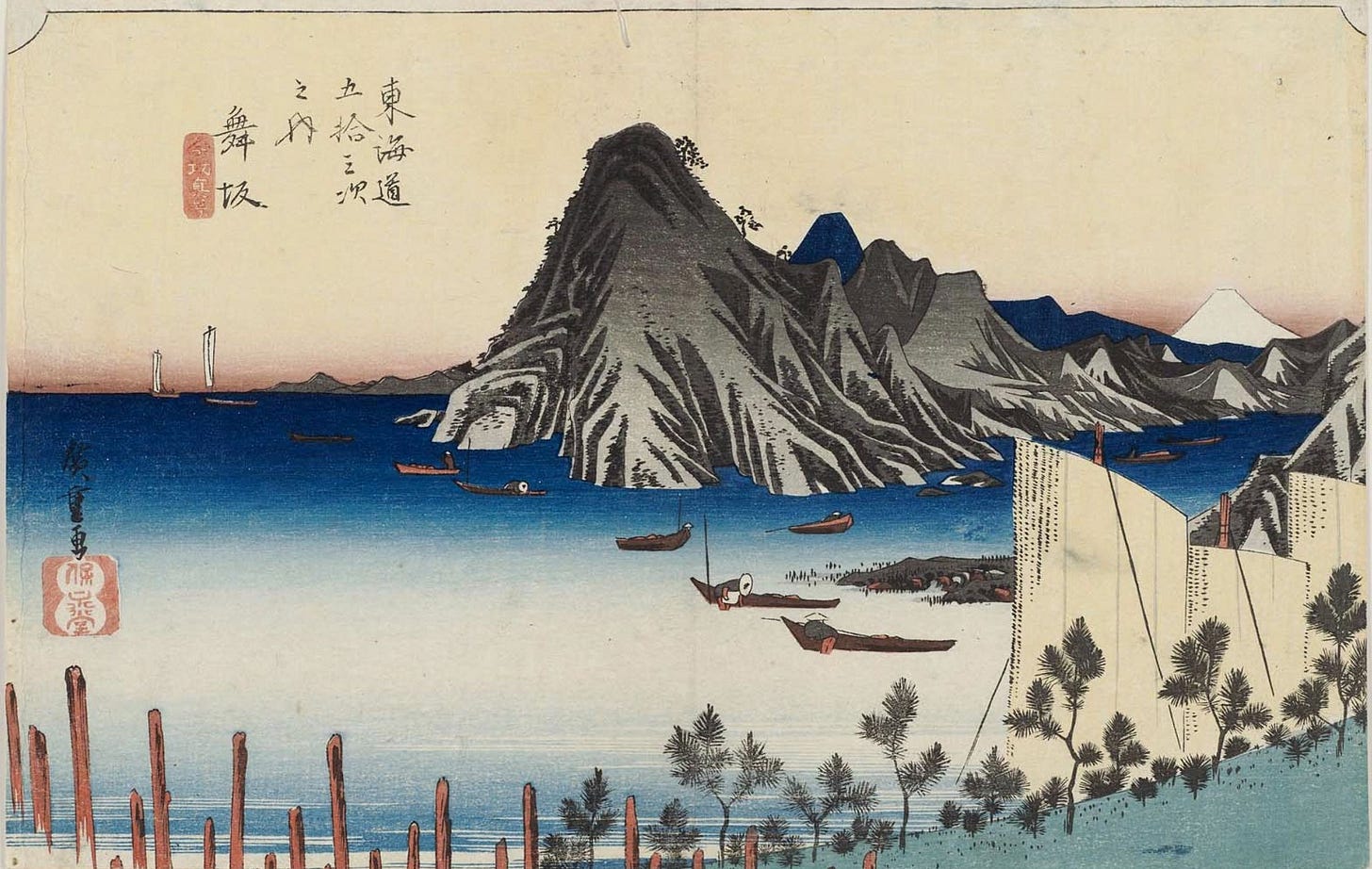
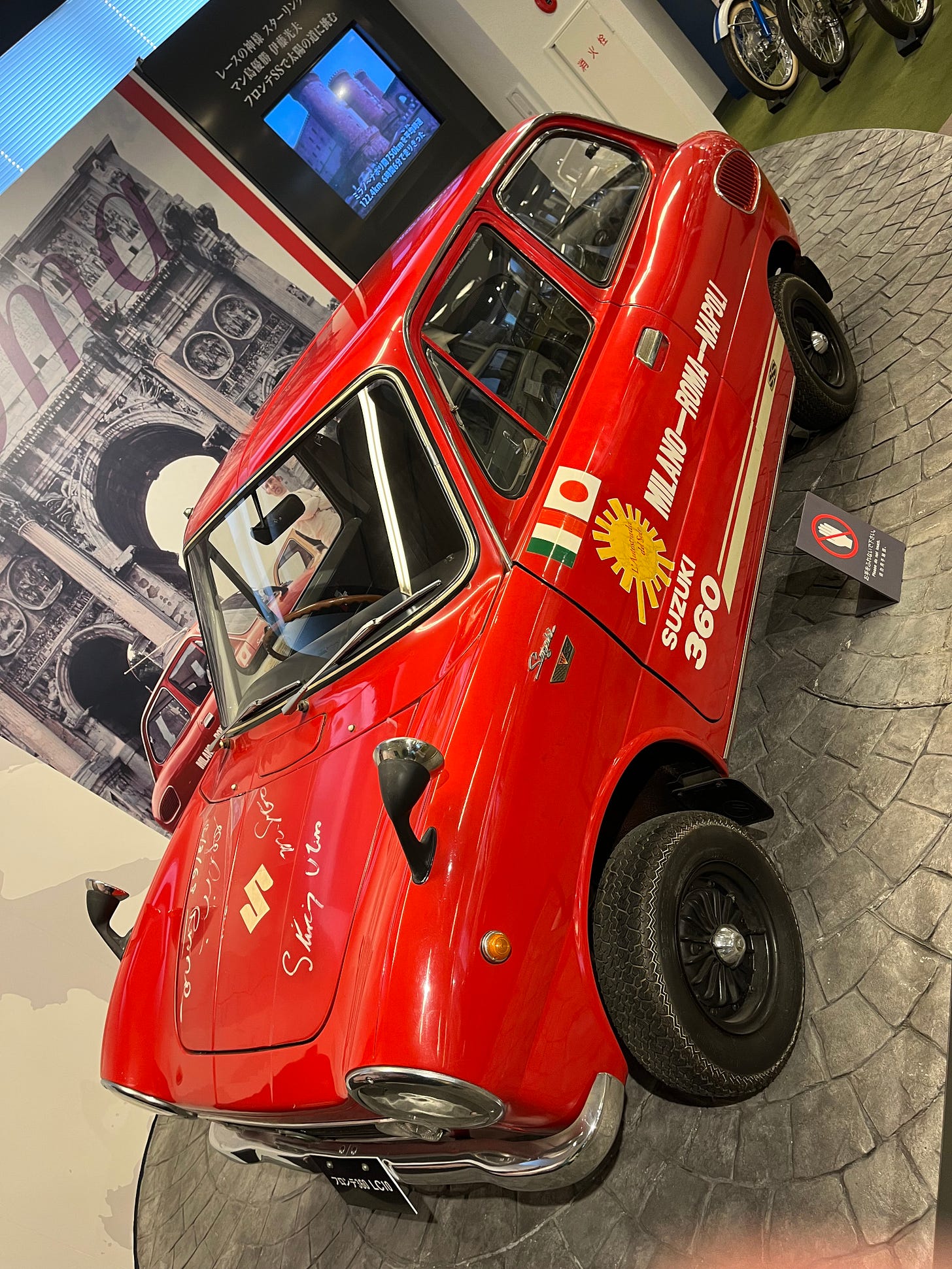
A great way to end a very interesting episode. It is not easy to summon Proust while out in the sticks in in the middle of Shizuoka.